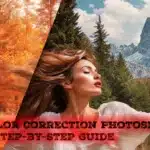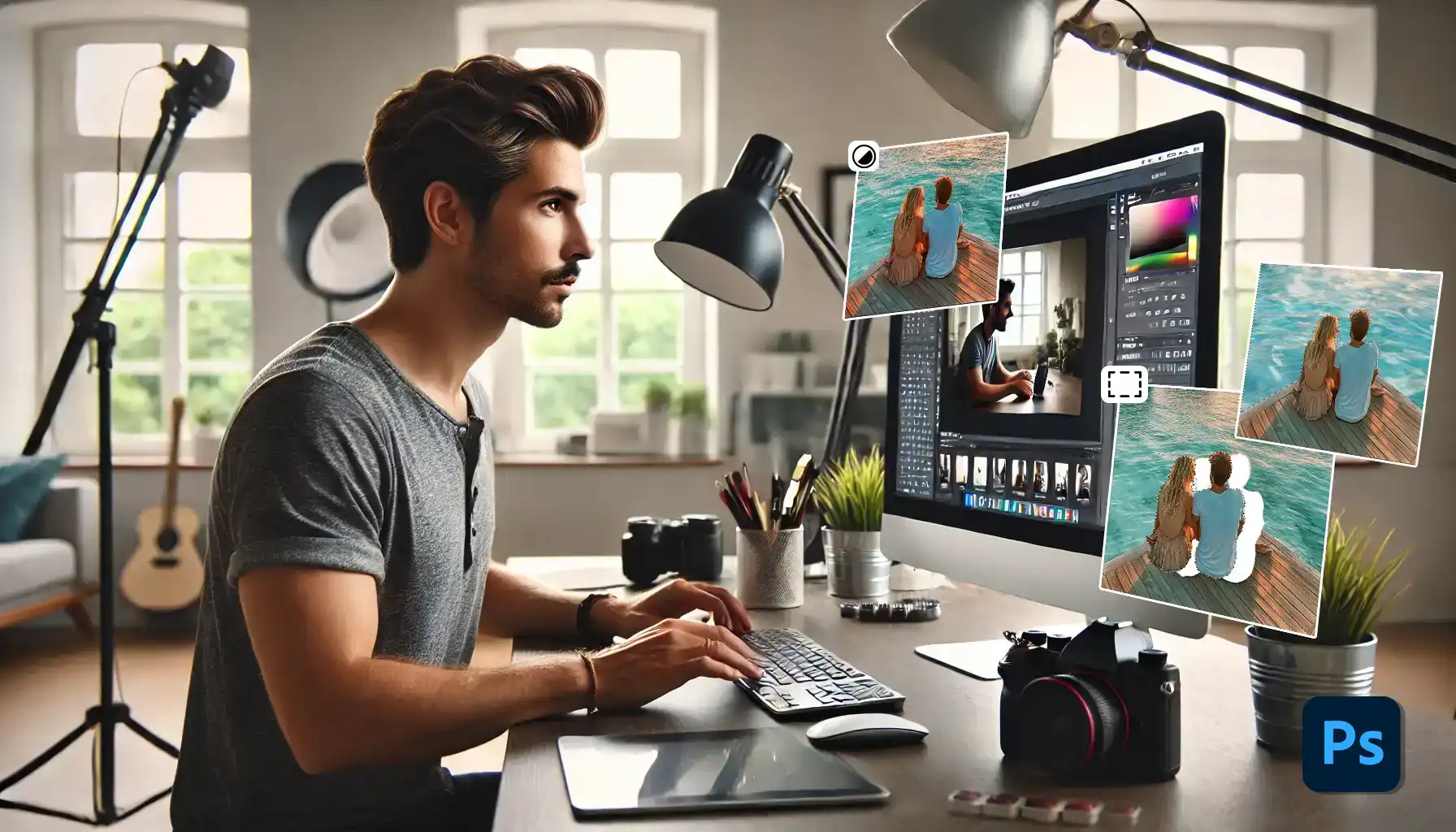
Are you eager to master photo editing with a Photoshop software tutorial?
Let me guide you through the basics of this creative journey where imagination meets functionality.
Photoshop and Lightroom offer endless possibilities for enhancing and transforming your images, and discovering their secrets can elevate your photography skills to new heights.
Whether you’re a beginner or looking to refine your techniques, this tutorial will grab your attention with straightforward steps, ignite your interest with practical examples, and fuel your desire to create stunning visuals.
By the end, you’ll be equipped to take action and apply these tools confidently in your own projects. Join me as we delve into the fascinating world of photo editing and unlock your full creative potential.
Table of Contents
What is Adobe Photoshop?
Adobe Photoshop is a digital art creation and image editing tool. It is widely used for creating and editing images and documents, offering features like the content-aware fill in Photoshop to seamlessly remove unwanted elements from photos.
Why Use Photoshop?
Photoshop is a powerful tool known for its extensive capabilities in manipulating images. Many users appreciate its ability to create detailed graphics.
Additionally, it helps remove flaws from photos, making it popular among photographers. The tools within the app support creativity.
Even beginners can start with simple edits and progress toward more complex projects, utilizing essential tools in Photoshop like the Patch Tool for precise corrections.
History and Evolution of Photoshop
Photoshop was launched in 1988 by Thomas and John Knoll. This introduction began a transformation in the digital art space.
Over time, Adobe has incorporated various features, ensuring the software evolves with new demands and remains an industry standard.
Each update adds functionality, keeping the tool relevant. Its broad use in media and design can be traced back to its versatile toolbox.
Getting Started with Photoshop Software Tutorial
If you’re new to Photoshop, starting can seem challenging. A Photoshop software tutorial can help simplify the process and guide you through the basics step by step.
Installing Adobe Photoshop
Follow these simple steps to get Adobe Photoshop up and running on your computer.
- Begin by ensuring your computer meets the system requirements for Photoshop.
- Visit the official Adobe website.
- Download the software from there.
- Follow the installation instructions closely.
- Once installed, open the software to start your creative journey.
Navigating the Photoshop Interface
Once you launch Photoshop, you’ll notice a toolbar on the left. This bar holds various tools significant for editing.
On the right side, typically, layers and adjustment panels reside.
At the top, you see the main menu with options like File and Edit. Get comfortable with these settings. They guide the user through projects efficiently.
Customizing Your Workspace
Customizing the workspace helps streamline your process. From the Window menu, select desired panels.
Drag them to arrange according to your workflow preference.
Adobe allows saving these arrangements. This helps recreate the same environment every session. This personalization enhances productivity.
Basic Steps for Using Photoshop in the Photoshop Software Tutorial
Follow these simple steps to get started with Photoshop. These basic actions will help you set up your project, make edits, and save your work efficiently.
- Create a new document.
- Adjust the canvas size suited for your project.
- Use layers; each edit sits on a separate layer.
- The text tool lets you add text.
- The brush tool provides diverse sketching styles for each edit.
- Save changes frequently as a PSD file to retain overlays.
- Save in different file formats as required, like JPEG for web usage.
Pro tip: Use keyboard shortcuts like Ctrl+Z to undo mistakes quickly, speeding up the productivity of your projects.
Fundamental Tools in Photoshop: Photoshop Software Tutorial
A Photoshop software tutorial can introduce you to the core tools that make editing easier. From selecting areas to refining details, understanding these tools will boost your editing skills.
Selection Tools Overview
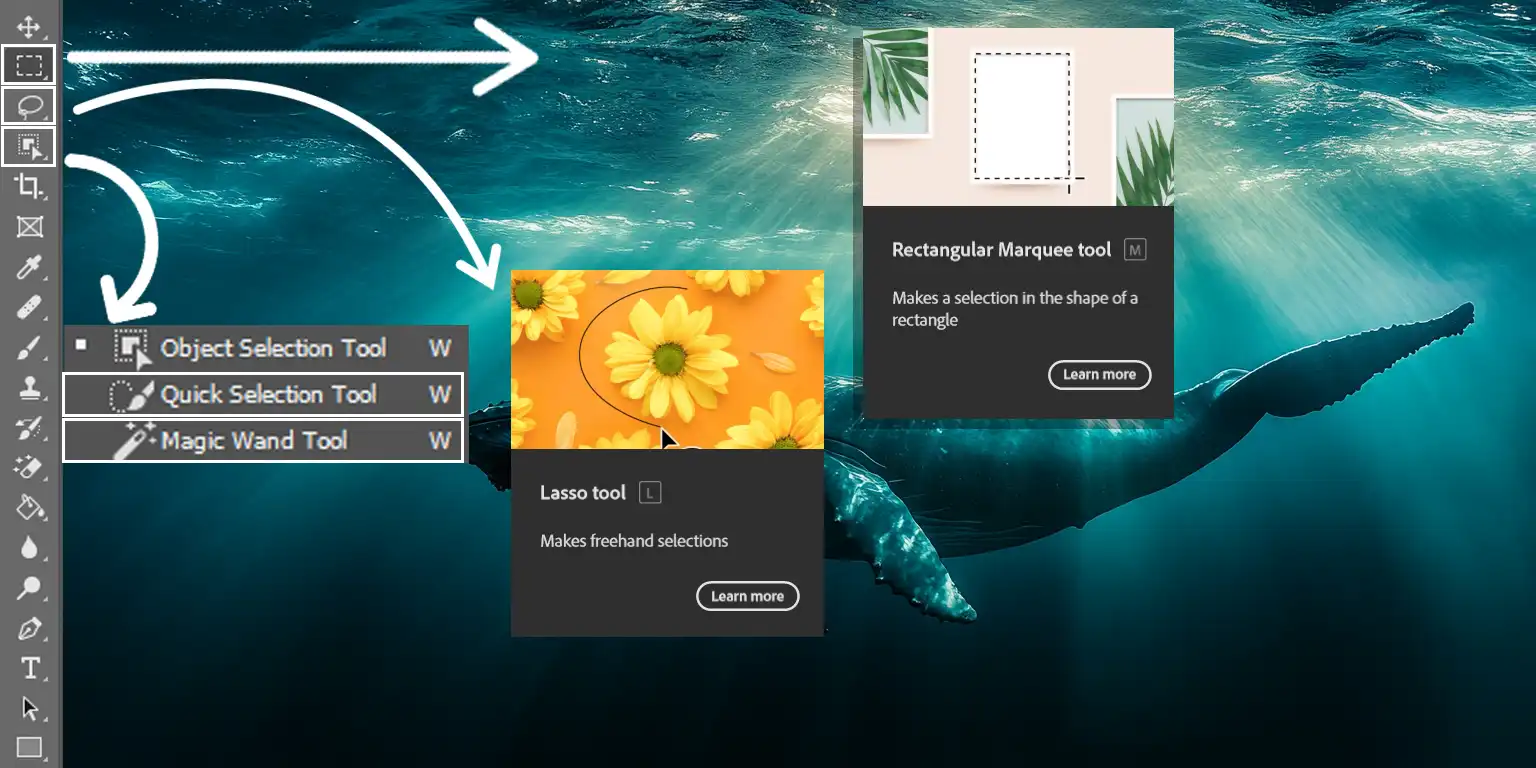
The selection tools are like your trusty pair of scissors. With these, you define areas or objects in a photo, offering control over what you want to change or highlight:
- Rectangular Marquee: This is used to select easy rectangular objects or shapes.
- Lasso Tool: Provides more control for drawing selections freehand, perfect for intricate areas.
- Magic Wand Tool: The magic wand tool selects areas based on color, which is handy for photos with backgrounds that share similar colors
- Quick Selection Tool: Works by brushing over the area you want to include, seamlessly selecting parts of a photo.
Crop and Slice Tools
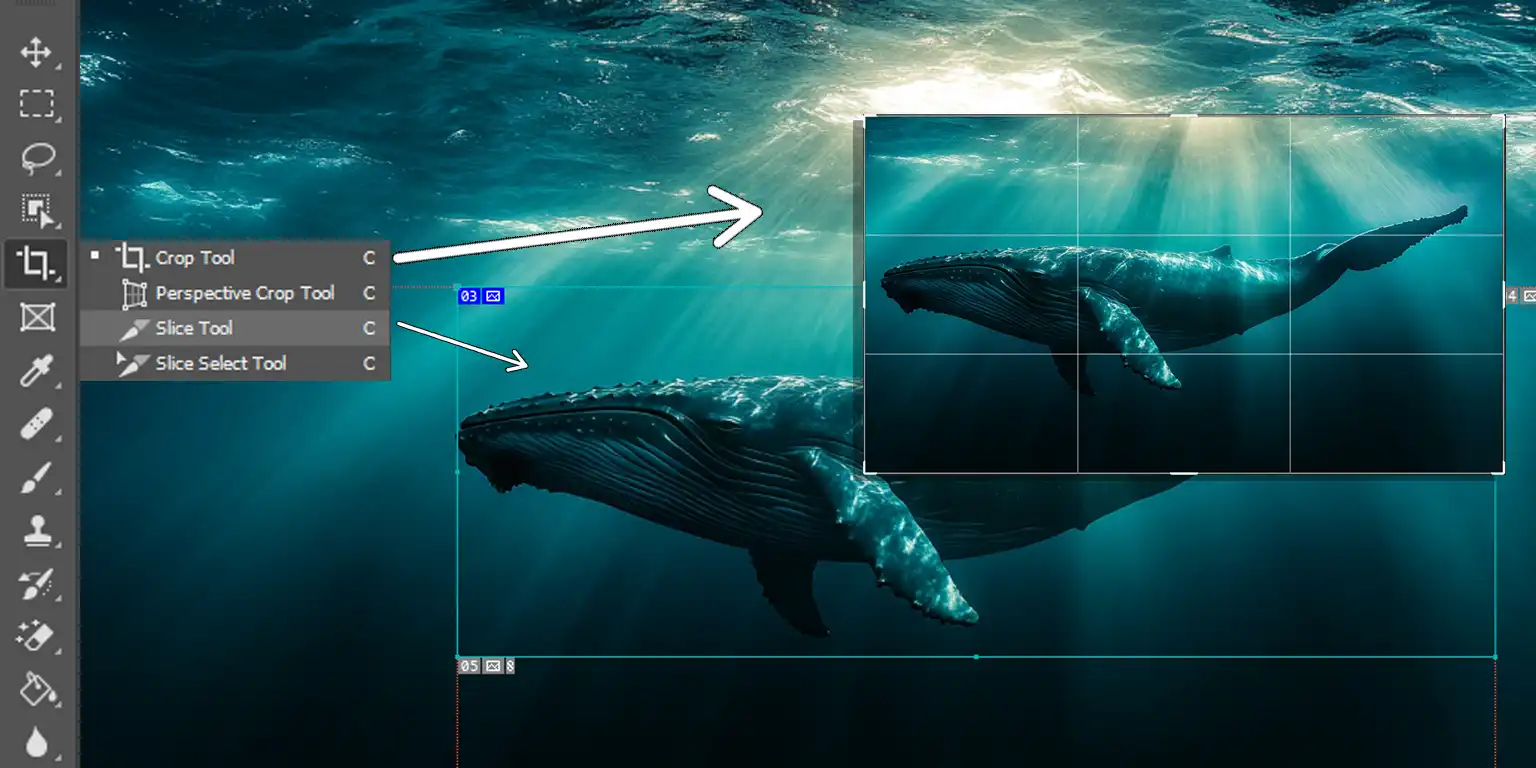
The Crop and Slice tools are significant for modifying and preparing images for various uses:
- Crop Tool: Allows you to remove unwanted areas from an image. Just select the tool, drag over the part you wish to keep, and press enter. This adjustment can change the image's focus, emphasize certain features, or resize it for print or online formats.
- Slice Tool: Works well for website designing, creating separate image files for web layouts effortlessly. Slices help in dividing an image into smaller sections, facilitating easier web coding and uploading.
Brush Tool Techniques
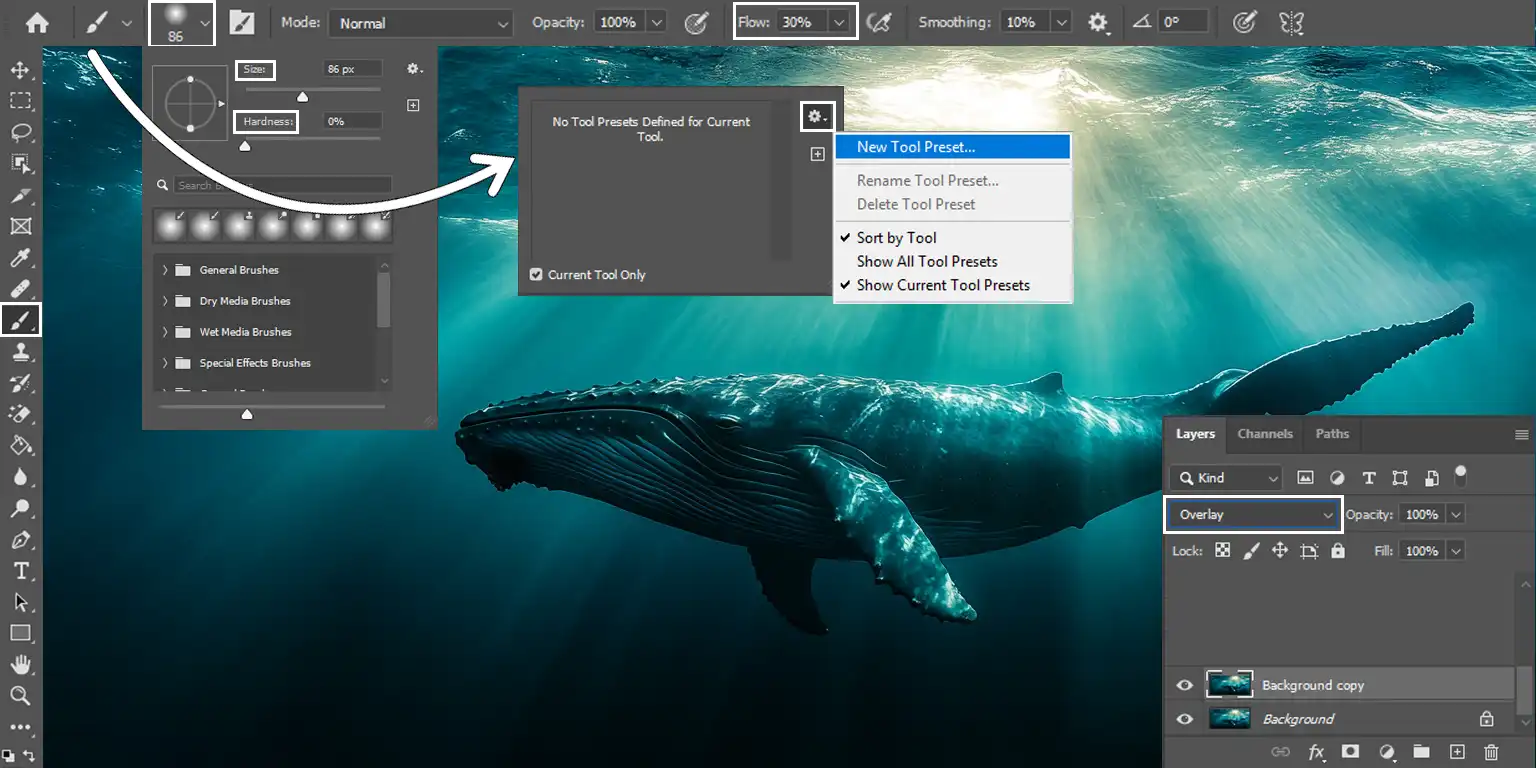
The Brush Tool is a versatile feature for painting and sketching directly onto an image or a transparent, new layer:
- It can mimic real paint, ink, or charcoal effects. Adjust size, hardness, and flow to achieve different textures.
- Store favorite configurations as presets for quick access.
- Use the brush tool in conjunction with layers to preserve the original image integrity.
- When coloring, either multiply or overlay blending modes on a new layer to alter effects without compromising existing overlays.
Pro Tip: Always work on a new layer. It gives flexibility to try ideas without worrying about losing any original data.
Advanced Editing Techniques: Photoshop Software Tutorial
In this part of the Photoshop software tutorial, we’ll dive into more complex tools and methods. Learning how to work with layers and masks will give you greater control over your edits.
Working with Layers and Masks
Layers in Photoshop function like a stack of sheets, offering flexibility. When using layers, each element, like text or an image, gets its place on a new layer.
This is particularly useful when you want to apply techniques like Photoshop masking, which allows for non-destructive edits.
Masks, on the other hand, allow precise control over what’s visible on a layer. Imagine trimming a photo in such a way that you can change it anytime without losing pieces of it. Isn’t that cool?
Using Adjustment Layers
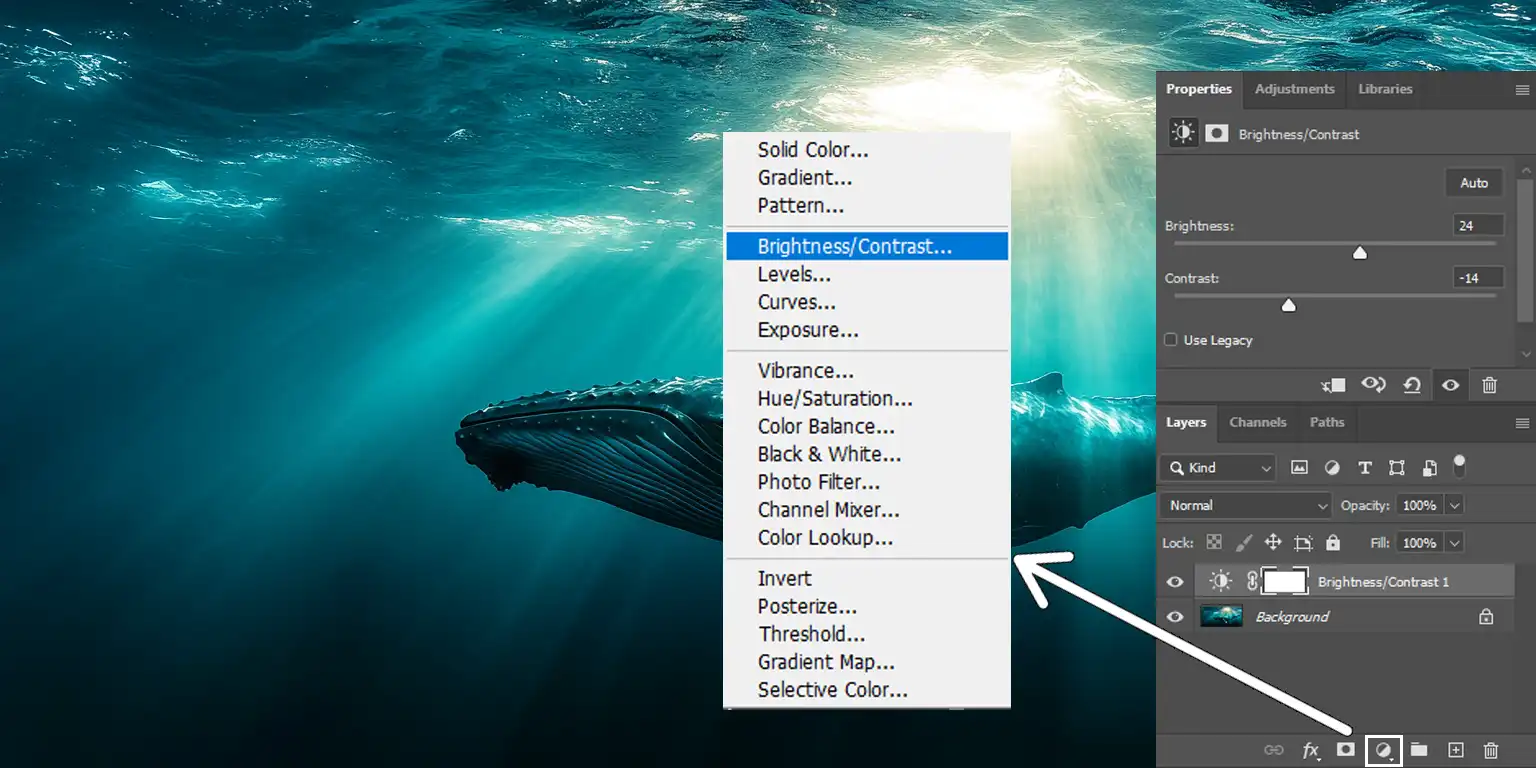
Adjustment layers are powerful tools for photo edits. They let us change colors or brightness without altering the core image.
Add an adjustment layer over your original, creating a non-destructive way to tweak it as you like.
For more on this, check out some Photoshop layering tutorials to expand your skills further.
Creative Effects with Filters
Photoshop has delightful filters to turn your photos into artwork. Want a vintage look or a watercolor effect? There’s a filter for that.
Typography in Photoshop Software Tutorial
Text in Photoshop isn’t just about letters. It’s about adding flair. First stop? The ever-useful type tool.
Type Tool Basics
Click where you want text, and you’re off. Fonts, sizes? The tool’s options bar handles that. Your playground of creativity starts here.
Creating Text Effects
Think shadows, glows, and outlines. With Photoshop text effects, words literally stand out. By experimenting, you create stunning visuals that speak volumes. Simple text becomes graphic art.
Working with Fonts and Styles
Choose the right fonts and styles to set the mood for your design. Here’s how you can use them effectively.
- Fonts set mood and style. From classic serifs to bold sans-serifs, there’s plenty to choose from. Mix and match to express ideas best.
- With styles, consistency is important. Applying styles fast-tracks the design process, keeping your text uniform throughout your file.
Pro Tip: Always save your work as a PSD file. Other formats lose layer data, but with PSD, you keep layers intact.
Working with PSD Files
You’ve got this image editing software. It’s powerful, like a multi-tool with hidden gadgets. A Photoshop software tutorial can help you unlock its full potential.
Photoshop and its PSD files are important instruments for those seeking to make the most of their images. We’re exploring the world of PSD files today.
Understanding PSD File Structure
You know how a new layer offers freedom. Layers stack on top of each other, providing structure and flexibility. Each layer holds different elements.
One might have your grandkid’s face and another, for example, the text wishing them a happy birthday. You can move or change them without affecting your core photo.
Loved using filters? Filters transform photos into art. In your PSD document, filters stay separate from the original image, offering you an undo button. Your photo remains safe beneath, allowing edits anytime. Think of it as a non-destructive playground.
Exporting and Saving Projects
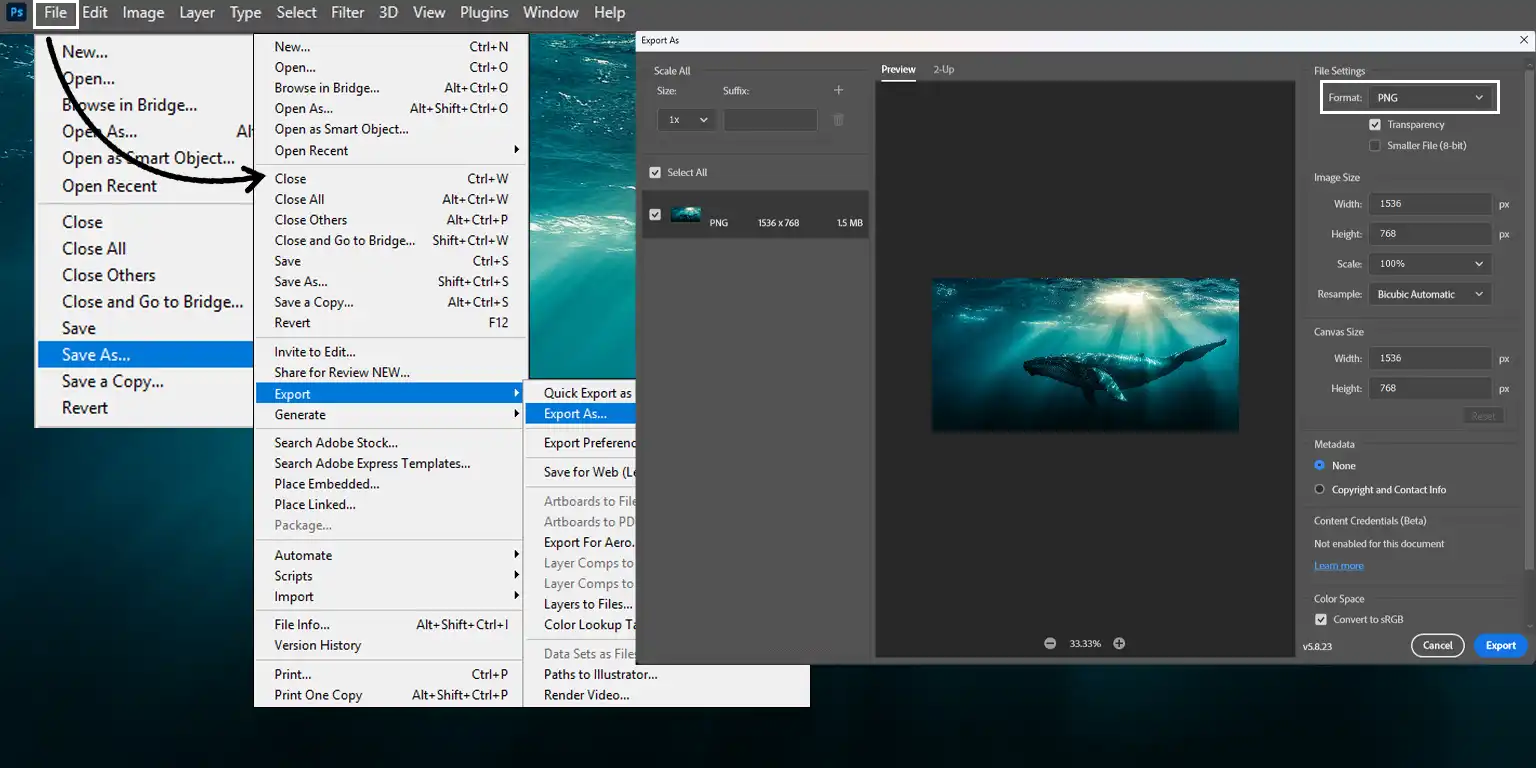
That artwork’s done, now what? Save it. “Save As,” then PSD ensures future edits. Export a JPEG or PNG when sending via email or social media.
This keeps layers intact. This step is important for preserving your work. Understanding the difference between NEF or JPEG format can also be beneficial when deciding on the final output.
Additionally, for compatibility, try to save a copy in various formats. This helps when sharing across different apps.
Sharing and Collaborating on PSD Files
Imagine working with a friend on a photo. Your PSD file structure allows easy collaboration. Just duplicate those layers and send the file.
For example, the beauty of PSDs lies in their adjustable nature. Adobe’s Cloud service also caters to this, having people work together seamlessly.
Converting files into shareable formats makes collaboration smooth. Sharing becomes easy when a PSD is translated into a readable file by everyone, regardless of their software.
Pro Tip: Enable auto-save settings under your application preferences.
It’s a lifesaver for accidentally closing the app without saving, especially when working with a Photoshop file extension.
Photoshop Software Tutorial: Tips and Tricks for Efficient Workflow
In this section of the Photoshop software tutorial, we’ll explore ways to speed up your editing process. Using shortcuts and time-saving techniques will help you work more efficiently and get better results faster.
| Aspect | Overview |
|---|---|
| Using Keyboard Shortcuts | Use shortcuts to speed up actions, like creating new documents or switching between layers, to streamline your workflow. |
| Organizing Your Layers | Start with a new layer for each element to avoid chaos. Label and color-code layers to keep things organized and easy to navigate. |
| Saving Your Work | Regularly save your work as a PSD file to preserve layers and make future edits easy. Export in other formats like JPEG when needed. |
| Troubleshooting Common Issues | If layers don’t show, check layer order. If colors appear dull, inspect your color mode and adjust accordingly. |
| Creating Custom Keyboard Shortcuts | Personalize your shortcuts to increase speed and efficiency. Muscle memory will help you navigate Photoshop more quickly. |
Keyboard Shortcuts and Time Savers
Keyboard shortcuts are the unsung heroes of Photoshop. Quickly pressing a few keys can often perform actions that would otherwise take multiple clicks.
For example, shortcuts are invaluable when creating a new document or quickly switching between layers.
They save time and keep your workflow smooth. If you’re using Lightroom, mastering Lightroom shortcuts can also significantly enhance your editing speed.
If you wish to move an object precisely, using arrow keys helps. They nudge your layer in tiny steps.
Organizing Your Projects
Get organized from the start. Use layers wisely. When starting your project, always begin with a new layer for each element.
Each element, whether text, a photo, or color adjustments, should have its own layer. This prevents chaos when making changes.
Labeling layers keeps things tidy. Color codes make it even clearer. Suppose you have a text layer; paint it one color. An image layer? Another hue. It’s like having a personal filing system within the app.
This approach also helps when thinking about how to choose the best Photoshop file name to keep everything organized and easy to find.
Troubleshooting Common Issues: Photoshop Software Tutorial
Frustrating moments happen. Layers don’t show, or settings misbehave. A basic fix? Check layer order.
Sometimes, it’s just hiding underneath another one. Raise it up! If images appear dull, inspect your color mode. Sometimes, switching modes bring colors back to life.
Dealing with unexpected crashes? Not fun! Regularly saving your work mainly as a PSD file saves headaches later. And if all else fails, rebooting your app can be a lifesaver.
With these strategies, your journey through Photoshop becomes less of a trial-and-error expedition and more of an adventure.
Pro Tip: Create keyboard shortcuts that are personal to you. Over time, muscle memory will turn them into your fastest Photoshop tutorials.
And don’t forget to explore the difference between Photoshop and Lightroom to see which software suits your workflow best.
Once you’ve mastered these tips, you can even try your hand at creating a Photoshop mockup for your designs.
Frequently Asked Questions (FAQs)
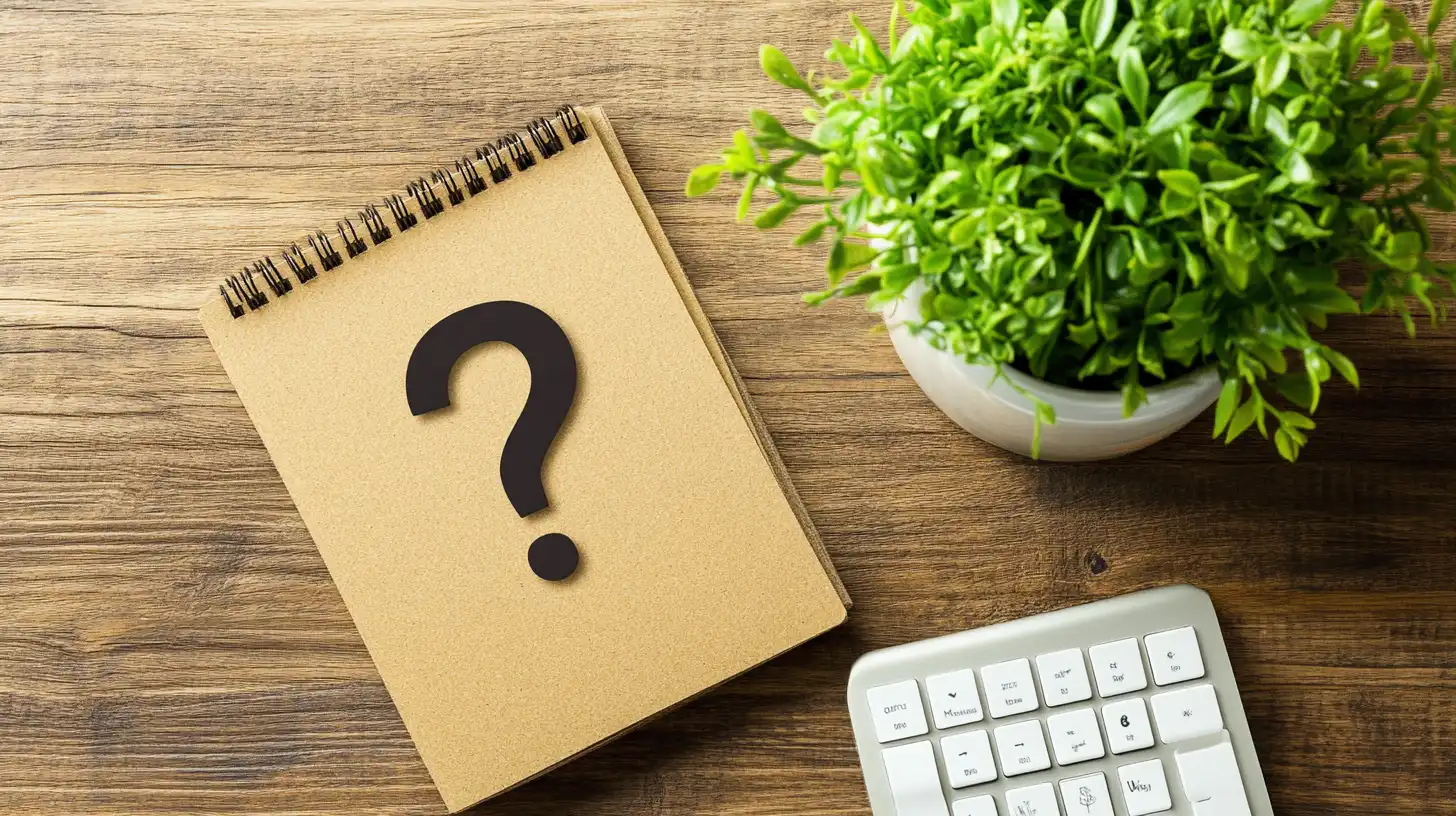
Can I learn Photoshop on my own with a Photoshop software tutorial?
Yes, you can learn Photoshop on your own. Many resources are available to guide you through the basics to more advanced techniques.
How do I start learning Photoshop?
- Download Photoshop: Get the latest version from Adobe's official website.
- Explore Guides: Check out free guides on YouTube or Adobe’s learning page.
- Practice Regularly: Start with simple projects to improve your skills gradually.
- Use Online Forums: Join communities like Reddit or Adobe forums to get help and tips from other users.
Can I learn Photoshop for free?
Yes, you can start learning Photoshop for free:
- Adobe offers a 7-day free trial where you can explore all features.
- Many online platforms provide free guides and introductory courses.
- Look for free resources and templates to practice your skills without initial investment.
Which version of Photoshop is best for beginners?
Adobe Photoshop Elements is recommended for beginners:
- It has a simpler interface and basic features that are easier to learn.
- Less expensive than the full version with enough capabilities to get started.
- Includes guided edits, which help beginners understand how to achieve certain effects.

Conclusion
As I ventured into the world of digital editing, finding a reliable “Photoshop software tutorial” was a game-changer for me.
It opened up endless creative possibilities, allowing me to transform ordinary photos into extraordinary works of art. With clear guidance, I learned to navigate complex features with ease and produce professional-quality edits.
For anyone looking to take their skills to the next level, I highly recommend checking out the Photoshop Course and the Lightroom course.
These courses have helped me grow tremendously, providing clear, structured paths for both beginners and those looking to refine their techniques.
If you’re just starting out or ready to enhance your editing skills further, Adobe offers excellent tools like Photoshop and Photoshop Lightroom, which I use daily.
With practice and the right resources, you’ll unlock your creative potential and gain the confidence to produce amazing edits.
Read more about Photoshop:







